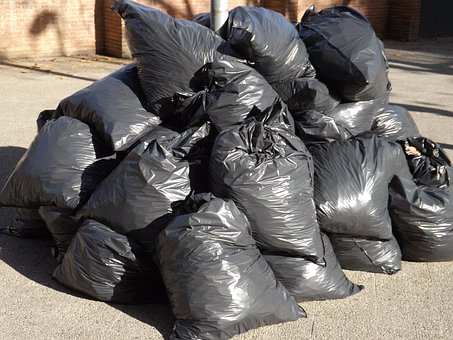Welcome to KDS Environmental
Reliability
100%
Affordability
100%
Professionalism
100%
Reputation
100%
 It is no secret that the amount of household waste produced is increasing every year at an alarming rate, and government are under pressure to broaden existing garbage dumps or develop new ones to accommodate the waste that is being produced.
It is no secret that the amount of household waste produced is increasing every year at an alarming rate, and government are under pressure to broaden existing garbage dumps or develop new ones to accommodate the waste that is being produced.
What is Hazardous Household Waste?
Household waste is leftover from household products. Harmful household waste are household products which contain chemicals that have the potential to affect plants, the health of human beings and animals and are harmful to the environment when dealt with improperly
Inappropriate management of household waste has the potential to be very harmful to the environment, people, and animals. What many of us might not recognize is that many of those typical household products contain destructive, hazardous, or combustible chemicals that can be harmful to the environment if not dealt with or managed correctly.
Harmful household waste should not be dealt with in the same way as routine waste. For example, gas can be buried in the ground, can affect rivers, and find its way into drinking water. The hydrocarbons in motor oils or pesticides have the potential to bio-accumulate in freshwater fishes and can find its way in the food cycle. Burning contaminated materials causes the release of hazardous chemicals and fumes in the air. Once released into the environment, these chemicals are dispersed over big areas, thereby affecting the health of individuals over a wider area.
Some of these chemicals remain in the systems of plants and animals for a long time and might get in the food cycle when the impacted plants and animals are taken in.
 Bioaccumulation of harmful compounds in the systems of plants, animals, and human beings has the potential to affect their reproductive lives, growth, impair the function of numerous organs such as the liver and kidneys, affect the functioning of the central nervous systems and body immune systems of human and animals and some have been listed as known carcinogens.
Bioaccumulation of harmful compounds in the systems of plants, animals, and human beings has the potential to affect their reproductive lives, growth, impair the function of numerous organs such as the liver and kidneys, affect the functioning of the central nervous systems and body immune systems of human and animals and some have been listed as known carcinogens.
How Can You Tell a Product is Hazardous?
Read the labels of products. In Earle and other parts of the country, labels are required for all products. These should provide details on the constituents of the products, consisting of symbols and words, to show the threat to animals, human beings, and the environment if mishandled.
How To Tell If Products Are Hazardous?
Constantly check out the label of products in your household and make it a practice of checking out the labels of a product before deciding to purchase them.
What Can You Do to Manage Contaminated Materials?
Purchase Environmentally Friendly Products – Experts concur that the best way to manage waste is to not produce it in the first place. You can begin by avoiding the purchase of products which contain chemicals that are hazardous to human beings, animals, and the environment. Purchase those products that are naturally degradable or friendly to the environment.
Safe Product Storage – Ensure that harmful products are stored in a safe place, that their containers are not damaged, do not have any leakages to reduce the threat of polluting water sources, land, human beings, animals, plants, and the environment. Ensure that destructive products like acids are saved in different areas from other harmful products.
Check products often to ensure that there are no leakages and damaged lids or bulging sides.
Constantly store products in their original containers to prevent unintended usage.
Ensure that these products are saved in a place where children and animals have no access to them.
Disposal of Products – Disposal of products should always be the last resort. Why? Since there are no safe methods of getting rid of contaminated materials. You can prevent the dilemma of contaminated materials disposal by either selecting naturally degradable products, recycling the product, giving the excess products to friends, next-door neighbors, or family or purchasing smaller sized volumes of the product.
 If, nevertheless, disposal is unavoidable, then you should get rid of the waste in the way recommended on the label.
If, nevertheless, disposal is unavoidable, then you should get rid of the waste in the way recommended on the label.
Although there are laws to manage the handling and use of big amounts of contaminated materials, the presence of laws to manage the common small quantities generated at the household is non-existent. For this reason, the obligation for the management of contaminated materials falls squarely on the shoulders of the contaminated materials generators.
Protection of the environment can only happen when you play a role in finding innovative ways to re-use, recycle, or reduce waste. This is vital if we are to protect the environment and health of future generations. Remember that Waste Management is Your Business, My Business, Our Business.
if you are in Earle or Cassin, Buena Vista, Losoya, Thelma, Oak Island, Southton, Bergs Mill, Terrell Wells, Palo Alto Heights, San Jose, call us now!
We are experts in environmental clean-up, and we can help you with eradicating dangerous items in your home. Our number one goal is to ensure that the environment is safe for everyone to live in, and your health is protected. Get in touch with us today and get a free, no-obligation quote.
We are the best eco-friendly company you can trust in Cassin, Buena Vista, Losoya, Thelma, Oak Island, Southton, Bergs Mill, Terrell Wells, Palo Alto Heights, San Jose and Earle.